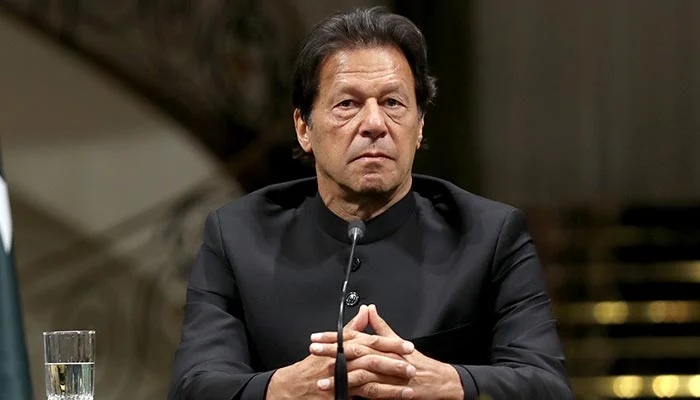The fall of Imran Khan
End of PTI’s 3-and-a-half-year rule and its replacement by Shehbaz Sharif is a development no one had anticipated
April 20, 2022

The ignominious end to the PTI’s three-and-a-half-year rule in Pakistan and its replacement by Imran Khan’s nemesis Shehbaz Sharif is a development that no one had anticipated.
The reasons for this surprise development are not hard to fathom if one is willing to look beyond the epiphenomenon and pay attention to the deeper forces that were at work triggering this tsunami of change.
Just before the 2018 national elections that marked the rise of the PTI, there was a growing realisation among the powers that Pakistani politics had reached a dead end as the alternating rule by both mainstream political parties — the PPP and PML-N — had failed to improve governance, ensure economic renewal and tackle the problem of violent and religious extremism. A third force, therefore, was needed that could rid the country of all these problems and get the country out of its socio-economic malaise.
The PTI — led by the charismatic and exceedingly popular Imran Khan — offered a ray of hope for the power planners of Pakistan. But the party needed the extra push to forge ahead of the PML-N and PPP. The opportunity came during the 2018 general elections. Tainted by the Panama scandal and many stories of widespread corrupt practices, the ruling party of the PML-N was marginalised while the PTI was promoted as the main contender for power at the centre.
The PTI had engaged in dharna politics in Islamabad that added velocity to its power grab; the party had already been ruling Khyber Pakhtunkhwa and therefore presented itself as a credible new force that could take the country towards the much-needed path of economic development and a welfare state.
The party’s emphasis on Riyasat-e-Madina (Islamic welfare state) further resonated with the ultra-conservative religious circles and the youth of Pakistan that was struggling to find an ideological mooring at a time of global transition occasioned by what Daniel Learner has called the ‘Passing of a Traditional Society’. In this era of global change and the political shift to the right, the PTI seemed eminently suitable to govern Pakistan.
More importantly, the party’s anti-India outlook and its ideological bent towards Islamic Ummah made it particularly relevant for Pakistan’s continuing search for a bloc of friendly Muslim states with heft and influence. Imran Khan’s personal friendship with Saudi Crown Prince Mohammed bin Sultan and his desire to cultivate deeper ties with Gulf countries seemed to add to his political stature as a world leader.
So for the first three years of the PTI’s rule, everything ran smoothly. Imran Khan not only seemed to subscribe to the "one page" but his political armour seemed flawless, shining and betrayed no visible chinks.
But there was one huge problem that lay hidden and surfaced only in the month of October last year — that of key appointments. Imran Khan’s preference was viewed as unprecedented interference with a well-established tradition of promotions based on seniority and merit. This background is essential to understanding the chain of events that led to the fall of the PTI regime from power. The circumstances were widely interpreted by opponents of the PTI as a setback for the party and the waning of institutional support for Imran Khan.
This so-called neutrality prompted the opposition to get their act together and collectively go for the hunt. But the opposition lacked the requisite number to bring this about. At the same time, there were rumblings from within the PTI ranks and its allies at the centre like MQM-P, BAP that they were willing to become part of the no-confidence move against Imran Khan if they were given assurances of the right kind.
Confident of its numbers (172 at a minimum) and buttressed by public support for "Go Niazi go", the PTI government retaliated by organising its own show of public support on March 27 in Islamabad. At this huge rally, Imran Khan made the cardinal mistake of publicly mentioning for the first time the "threat letter" — actually a cipher/cable — that was sent to his government by a foreign government (the US) to remove him from power as part of a “foreign conspiracy.”
He alleged that this "letter" had been received by Pakistan as early as March 7 and his government had kept quiet about it due to its preoccupation with the OIC conference. Shah Mahmood Qureshi who briefly spoke at the rally stated that he was privy to so many state secrets, one of which he was asking PM Imran Khan to share with the public today because it entailed the security of the state.
Little did Imran Khan realise that his foreign minister was offering him the bait of the “foreign conspiracy” theory as a political weapon to be deployed against the united opposition. Concomitantly, the united opposition had been gathering votes and allies to mount a challenge to his power within parliament to vote him out.
On April 3, the National Assembly met to consider the "no-confidence move". Realising that he actually might be voted out of power, Imran Khan, in a desperate attempt, ordered the vote cancelled and dissolved the National Assembly. The stunned opposition immediately appealed to the Supreme Court against the dissolution. The Supreme Court constituted a special bench that ended up restoring the National Assembly. Instead of complying with the decision of the apex court, Imran defied it and was forced to leave the PM’s office.
The writer is a professor and HOD at the School of Social Sciences and Humanities, NUST.
Originally published in The News











